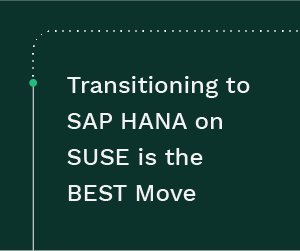Live from SAPinsider Studio: Hans Thalbauer on Supply Chain Digitization
Hans Thalbauer, Senior Vice President, Extended Supply Chain, SAP, joins SAPinsider Studio at the SAPinsider SCM 2016 event to discuss the four pillars of the supply chain digital framework: customer-centricity, individualization of products, collaboration, and resource scarcity.
This is an edited transcript of the discussion:
Natalie Miller, SAPinsider: Hi, I’m Natalie Miller with SAPinsider, and we’re here at the SCM, CRM, and IoT event in Last Vegas, and I’m joined today by Hans Thalbauer, Senior Vice President of Extended Supply Chain at SAP. Hi Hans, thank you so much for joining me today.
Hans Thalbauer: Hi, thank you.
Natalie: So I was hoping we could start by having you just explain a little bit about your role at SAP.
Hans: My name is Hans Thalbauer, I’m 15 years with SAP, and all this time, actually, I was working in the supply chain, manufacturing, and product lifecycle management area. I’m heading up the extended supply chain area, which is really the aspects of all the solutions which we’re offering for chief operating officers, for chief supply chain officers. So we combine the supply chain planning, the logistics area, but also the r&d, engineering, manufacturing, and asset management area. So again, it’s really all the processes and solutions relevant for a chief operating officer.
Natalie: Yesterday in your keynote, you were talking about digitization and extending the supply chain. Can you talk about some of the challenges and effects that the digital transformation is having on the supply chain?
Hans: The digital transformation is huge, right. If you think about all the changes which are going on right now in the context of supply chain, the context of manufacturing, it’s amazing. It’s actually, I would even say the last 15 years we haven’t seen a situation like this where changes are driven very much by end consumers. End consumers, the expectation of an end consumer like you and me so you want to order something, maybe it should be personalized or individualized to you. Then, when you order it, you want to have it immediately, at least I do. So it’s kind of, well, in the past this was not really possible. But now more and more companies are really introducing this concept of really being able, creating a product, delivering it to you, maybe even within one hour. So if you look at companies like Alibaba, like Amazon, and so on, they do that already. So this is a huge change from the past. It’s not only same day delivery we are talking about, it’s one hour delivery. The next element which is changing everything is really about technology and the adoption of technology. Think about technology in terms of Internet of Things, of course, but then, very precisely, think about warehouse management and about robotics. In manufacturing a level of automation is in place which is, it’s really amazing when you look at manufacturing plants and how it is. The element of leveraging signals from vending machines, where you just replenish your vending machine and not actually sending the product anymore to the retail store. So all of that is really changing the way how companies need to think about how they run their supply chain. It’s really all about the speed and the second aspect about how they introduce products. And so this creates complexity, and keeping the complexity under control is now the key task.
Natalie: In terms of that, how do you advise customers on looking at their business in terms of how they can achieve this?
Hans: That’s a very, very good question. What we put together is a so-called framebook, digital transformation framebook. And we look at it from four different angles, you can call it digital priorities. And the first one is definitely customer centricity, so really keeping the customer in mind. Like I said, it’s a very much end-consumer driven economy, even if you’re not directly serving the end consumer, even if you’re in a chemical company in an asset-intensive industry, it’s very, very much an end-consumer world that you need to serve. So customer centricity is front and center.
What does it mean, customer centricity? Companies have introduced more and more channels how they sell their products. So they sell their products online, they sell their products in the retail store, by wholesale, or by direct sales. And if you think about this, for all these different channels, supply chains are being set up separately and differently in order to run the supply chains for these channels. That increases the complexity. And now the aspect of, not only do I have more and more supply chains, now I need to also understand the demand on a very granular level because it’s all about the speed. So in the example of Amazon one-hour (delivery), it’s not enough to understand, I have a sales order, I have an order coming from somewhere. I also need to merge this information with additional information like traffic. So if you want to deliver within one hour, you want to understand, is there a traffic jam somewhere in the city which I need to avoid? So you need to merge information in order to be more precise.
You need to think about the way how you send demands differently. It’s not calculations so much anymore, it’s not statistical forecasting, it’s really sensing the demand and predicting the demand, which is important in this environment. Then, of course, you need to have a logistics network in place which allows you to be very fast. The last mile shipment, so the shipment from the distribution center to me as a person, as an end consumer, this is a process where it needs to be very fast. So that’s all these elements which need to be in place for customer centricity.
The second one, the second angle how we can look at it and really start a digital transformation, is really around the individualization of products. So I create a product which is personalized or individualized for a customer or for an end consumer. And this is fascinating when you look at different companies, what they are doing in the different industries. Just look at the apparel and footwear industry, like the Nikes, the Adidas, the Under Armors of this world. It’s amazing how far they are, how innovative they are in their approach of addressing an end consumer nowadays. You can go into a retail store and maybe there’s even a 3D printer which prints the insole of your shoes while you are there, individualized for you, so that you have much better experience with your running shoes. So, the way how you need to think about the design of a product, the way how you need to think about manufacturing, the way how you need to think about the asset management process is changing, is creating more complexity. Because maybe you’re now in a lot size of one production environment, so instead of mass production I have lot size of one which I need to produce. How can I do that efficiently? So here, Internet of Things, Industry 4.0, are the key topics where the degree of automation is very high.
The third angle which you can look at is really around the collaboration aspect. You are not working alone; you’re working with your suppliers. You’re working with your freight forwarders, with your logistics service providers, with your customers, and that in a highly collaborative environment. In order to achieve the speed which is needed, a one-to-one connection is not good enough anymore. We need to think about networks where we truly have connected not only the tier-one supplier, but actually multiple tiers so that you have to enter in view of the supply chain.
And finally, the fourth angle you can look at is really the resource scarcity, which means I need to be compliant. I need to have processes in place which ensure from the very beginning of the innovation cycle to the very, very end when I sell the product, the product really meets the compliance aspect and is ready to sell into these markets.
So four different angles, how companies really start, and it really depends a little bit which industry they are coming from. But the four angles; it’s the customer centricity, the speed, how I can shape the products to the customer, understand the demand; second, the individualization of products; the third one, the sharing economy, how you distribute products and how you actually deliver; the fourth element, the resource scarcity, where it’s about compliance aspects.
Natalie: And how is SAP helping customers realize the possibilities and work through all that?
Hans: One key task we have is in this increased complexity, we need to simplify. It’s the only answer we can have. And the way how we do that is we use the next-generation erp solution, s/4hana, to orchestrate these processes for extended supply chain. It builds the core, it simplifies, because here we are not only consolidating processes, but heavily innovating processes. We are creating a life environment. We are creating an environment where it’s not just real-time; the element is, and the key aspect is, it’s not just integrated business processes within s/4hana – they’re embedded. And if they are embedded, you have information available all the time which creates this life environment. So S/4 builds a core element.
The second aspect is the network in order to collaborate, and here Ariba Business Network is the answer in the extended supply chain world, where it just has proven with Ariba Network, where already 1.8 million trading partners are on-boarded, that this is the way how companies can be very flexible and can really communicate and collaborate with each other in the best possible way.
The third aspect is addressing these four digital priorities with specific, best-in-class cloud solutions. And we think about customer centricity, we are talking about integrated business planning. It needs to be a planning environment which allows you to simulate very fast, which creates the easiness of planning, which allows you to sense demand, which allows you to determine the inventory situation. On the manufacturing side, really thinking about the distributed manufacturing processes. When we think about 3D printing in a store, you need to understand still the quality aspects, so really having here a distributed manufacturing environment.
On the compliance aspect, it’s obvious when you need to ensure the compliance of a product. Let’s say, in consumer products we are talking about from farm to fork, so you need to cross many, many tiers in the supply chains, so you need to have an environment which allows you to capture that in the entire supply chain, which means a cloud solution is really the perfect answer. And then the fourth element, the resource scarcity, is really about the product safety and stewardship aspect.
Natalie: Well Hans, thank you so much for being here and sharing your insights, I really appreciate it.
Hans: Thank you.





